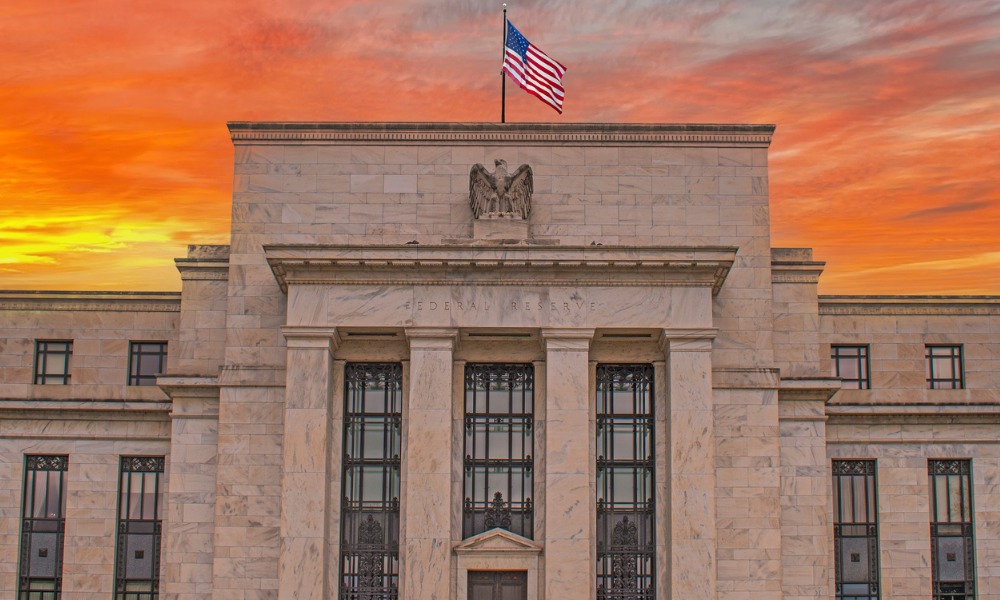Inflation rises slightly in May as income and spending fall, challenging Fed path

US inflation continued to run slightly above the Federal Reserve’s target in May, while consumer spending and personal income both declined, complicating the central bank’s path forward on interest rates. Markets betting on Fed policy believe it could lead to three rate cuts for the rest of 2025.
The Commerce Department announced on Friday that the personal consumption expenditures (PCE) price index rose 0.1% in May, bringing the annual inflation rate to 2.3%. This measure is the Fed’s preferred benchmark for tracking inflation. Core inflation, which excludes food and energy, rose 0.2% for the month and 2.7% year over year.
Both the headline and core inflation readings came in slightly above expectations and are still above the Fed’s 2% goal. Policymakers tend to focus more on core inflation because food and energy prices can be volatile.
However, the markets that bet on the future actions of the Federal Reserve see Friday’s news as the latest piece of good news that might lead to more rate cuts over the rest of 2025.
Several governors on the Fed board have discussed in recent days that they favor cutting rates as soon as the July meeting. This is combined with pressure from the Trump administration to make significant rate cuts.
The website FedWatch, which tracks interest rate traders and the likelihood of rate changes by the Fed, now has rate cuts priced in at September, October and December meetings of the board. It also has a nearly 20% chance of a rate cut as early as July.
Each of the rate cuts is forecasted to be a 0.25% cut, which would take the Fed funds rate range down to 3.5% to 3.75% by the end of 2025.
Personal spending decreased
Inflation’s persistence was matched by weakening consumer behavior. Personal spending slipped 0.1% in May, while income fell by 0.4%. It was the first monthly drop in spending since January. The decrease in income followed a temporary boost earlier this year due to adjustments in Social Security payments for some retirees who worked in state and local government jobs.
Vehicle spending dropped significantly in May, as many consumers had made their purchases earlier in the year to avoid higher prices from new tariffs. Analysts noted that while some prices have increased due to trade policy, others have fallen, helping keep overall inflation in check.
Melissa Cohn, Regional Vice President of William Raveis Mortgage, expects mortgage rates to remain volatile through summer, with bond markets reacting to inflationary pressures. She advises against anticipating significant surges for now.https://t.co/4YEzmAA0eH
— Mortgage Professional America Magazine (@MPAMagazineUS) June 25, 2025
Despite current trends, there are signs that inflationary pressures could mount in the coming months. Nike and Walmart were two companies that warned price increases could be coming soon as a result of the tariffs.
Tariff impacts
The impact of tariffs may have been muted so far because many goods were imported earlier in the year before duties were imposed. Economists at JPMorgan told the Associated Press that many companies are currently absorbing the costs of the tariffs, which reduces their profit margins and could eventually impact employment trends.
“This morning’s news was consistent with other reports showing the economy gradually losing momentum in the second quarter, ahead of the brunt of tariff increases expected to wash ashore during the summer and early fall,” Gary Schlossberg, a market strategist at the Wells Fargo Investment Institute, told CNBC.
Schlossberg added that the latest data helps “keep hopes alive” for a potential rate cut in July, although he also said talk of a cut may still be “premature.”
While investors continue to speculate about the Fed’s next move, the central bank has shown no urgency. Chair Jerome Powell told lawmakers earlier this week that the Fed will wait to see how the economy and inflation evolve before adjusting rates. Most Fed officials have echoed that position.
President Donald Trump, however, has repeatedly urged the Fed to cut interest rates and has personally criticized Powell. In recent comments, Trump referred to Powell as “stupid” and suggested that a new Fed chair may be named soon. Some economists also believe that the Fed has been too slow in making rate cuts.
Food prices rose 0.2% in May, while energy prices fell 1%. Gasoline and other energy goods declined 2.2%. Shelter costs rose by 0.3%. The services sector has accounted for a significant portion of the recent price increases, rising 3.4% over the past year. By comparison, prices for goods are up just 0.1%.
Stay updated with the freshest mortgage news. Get exclusive interviews, breaking news, and industry events in your inbox, and always be the first to know by subscribing to our FREE daily newsletter.



